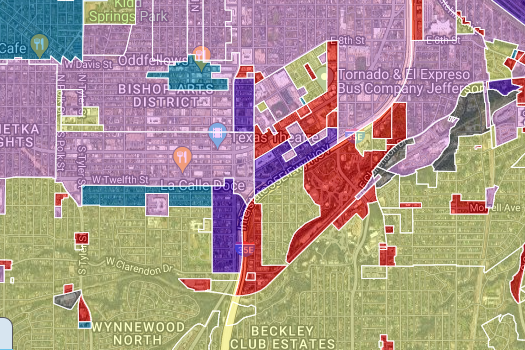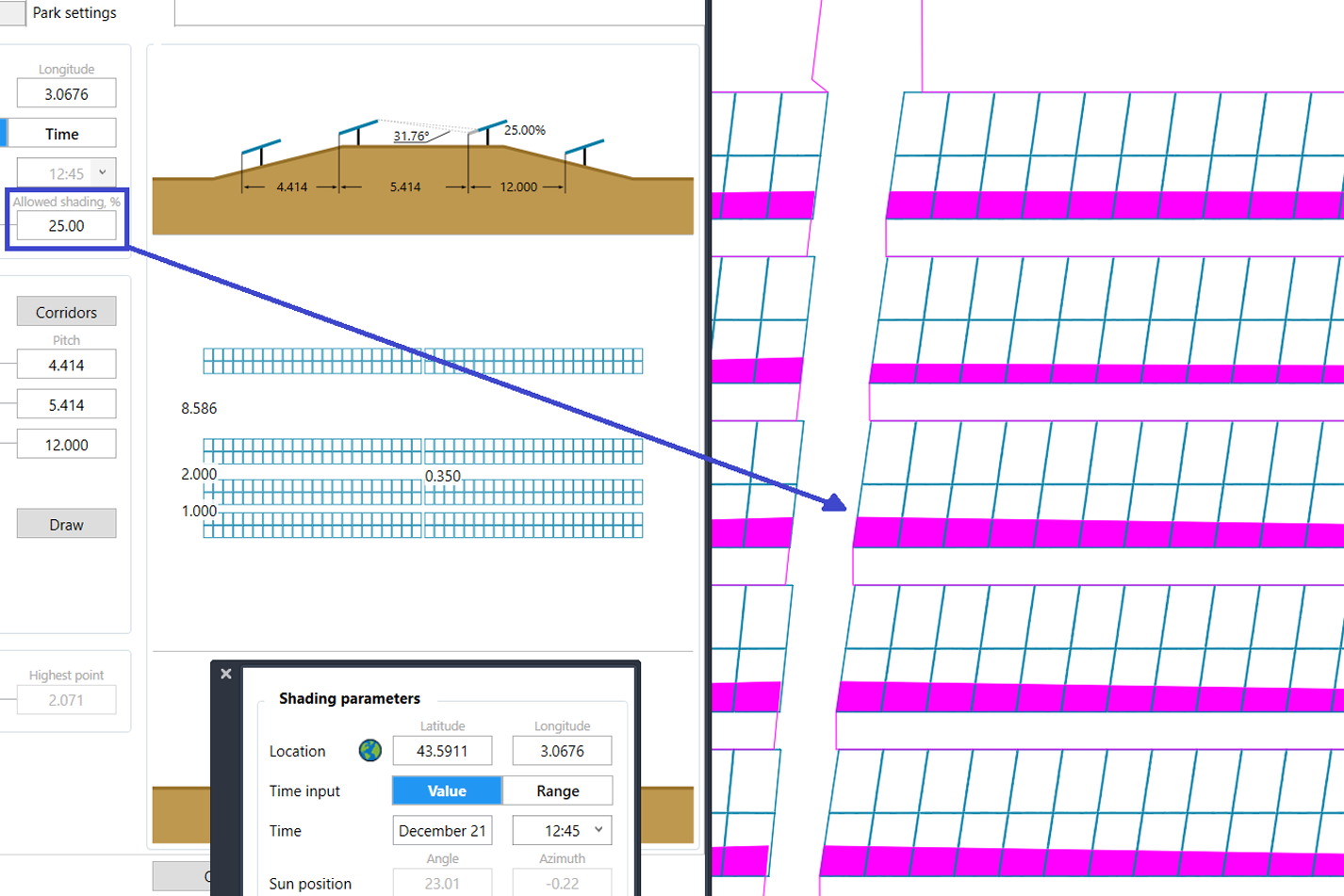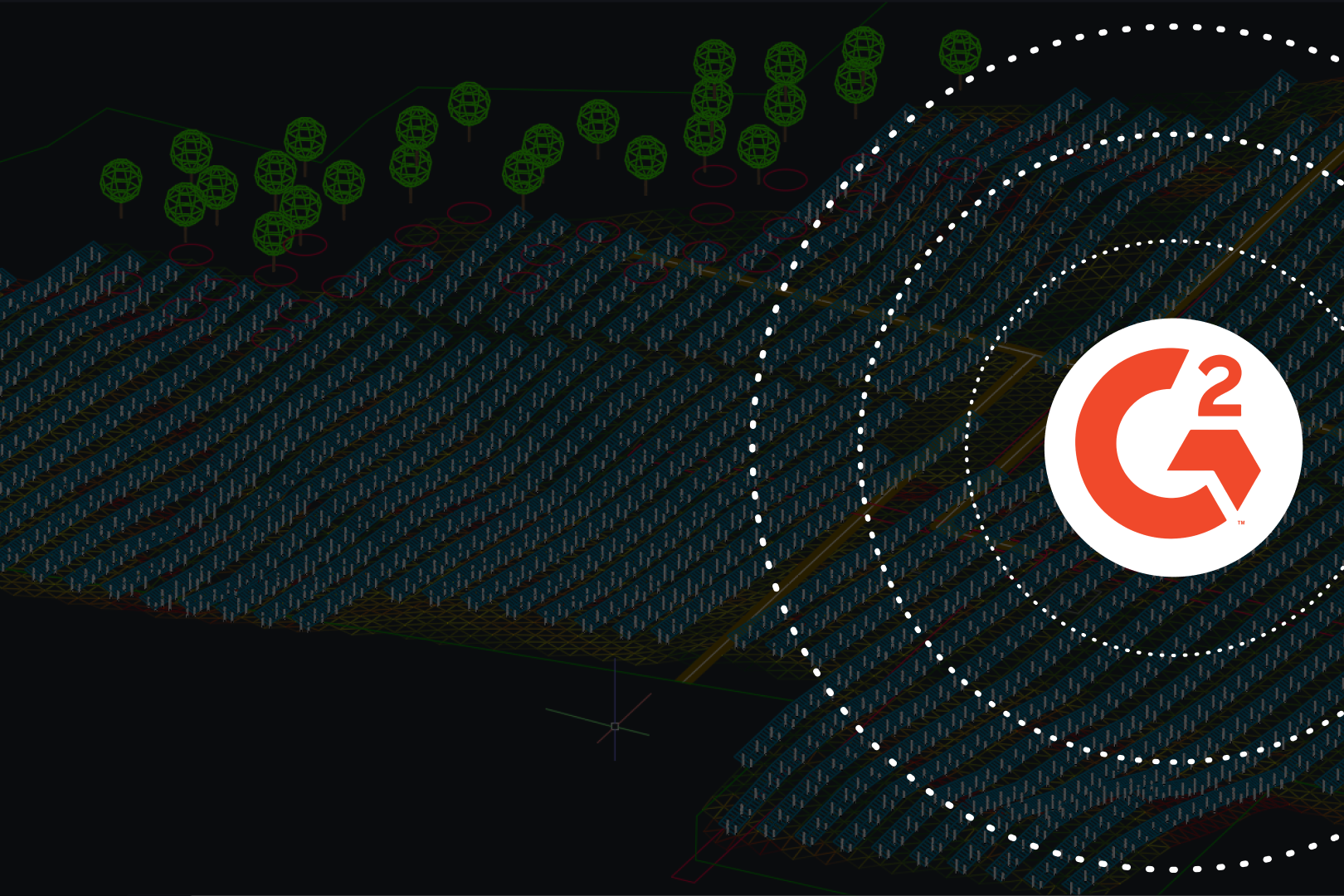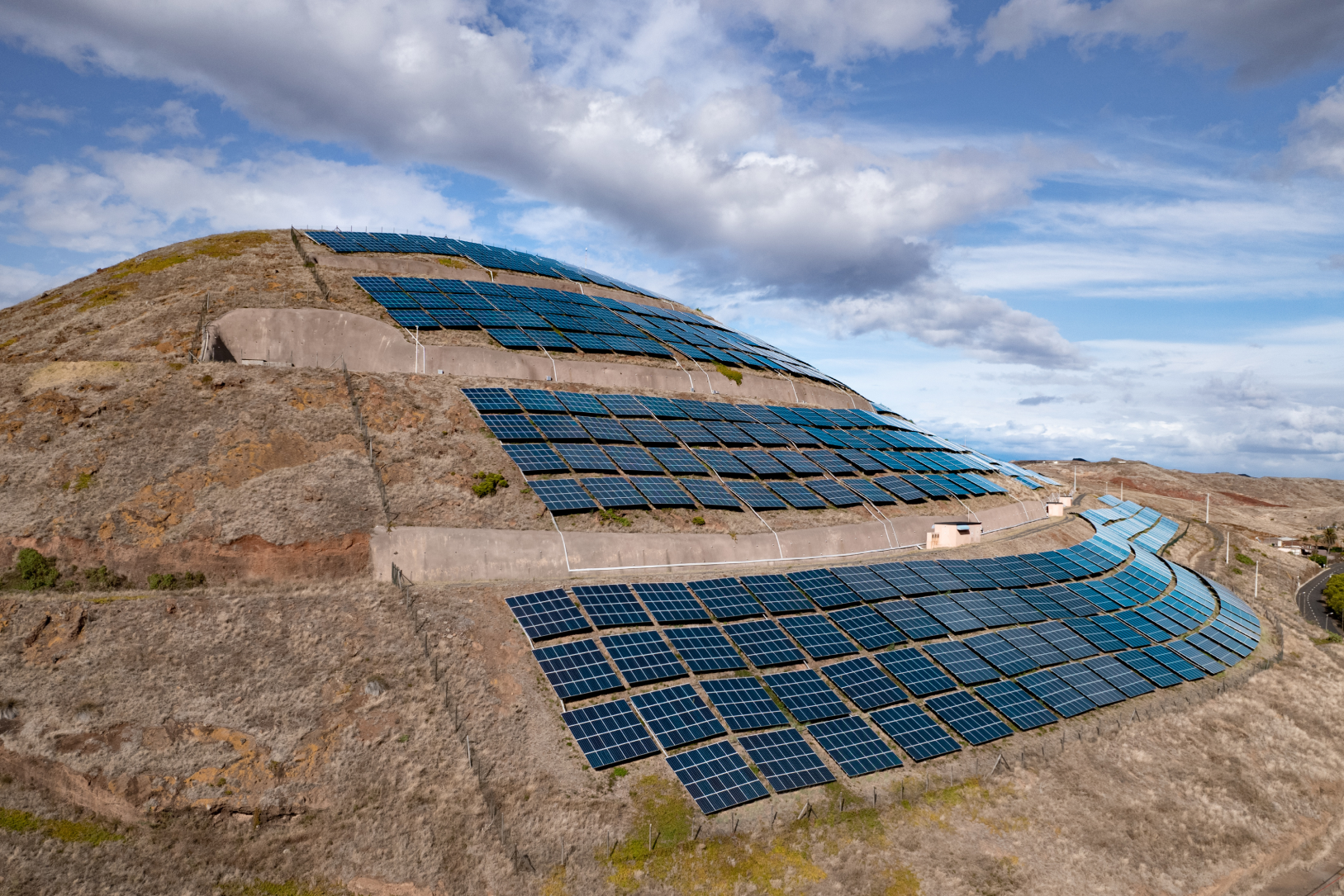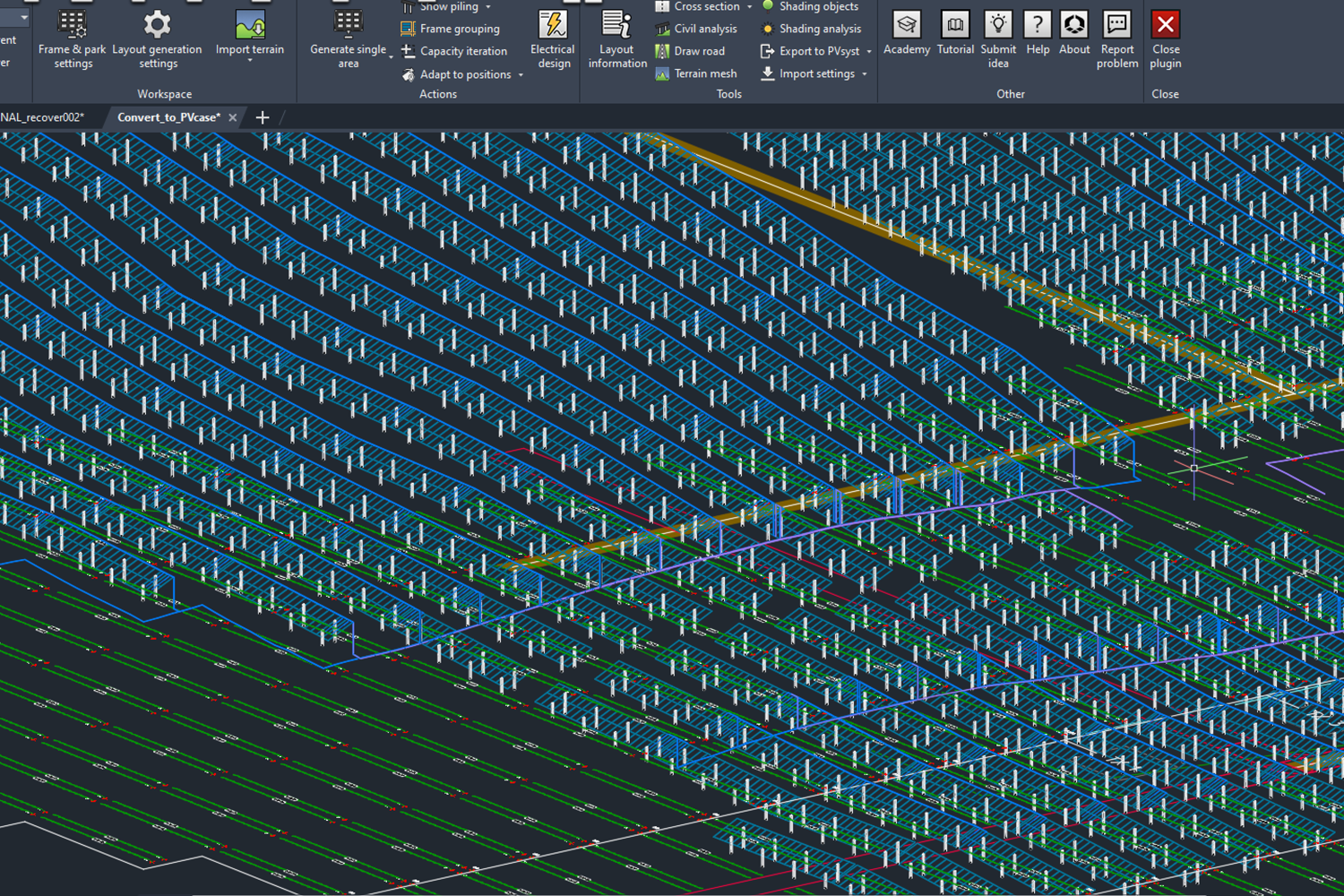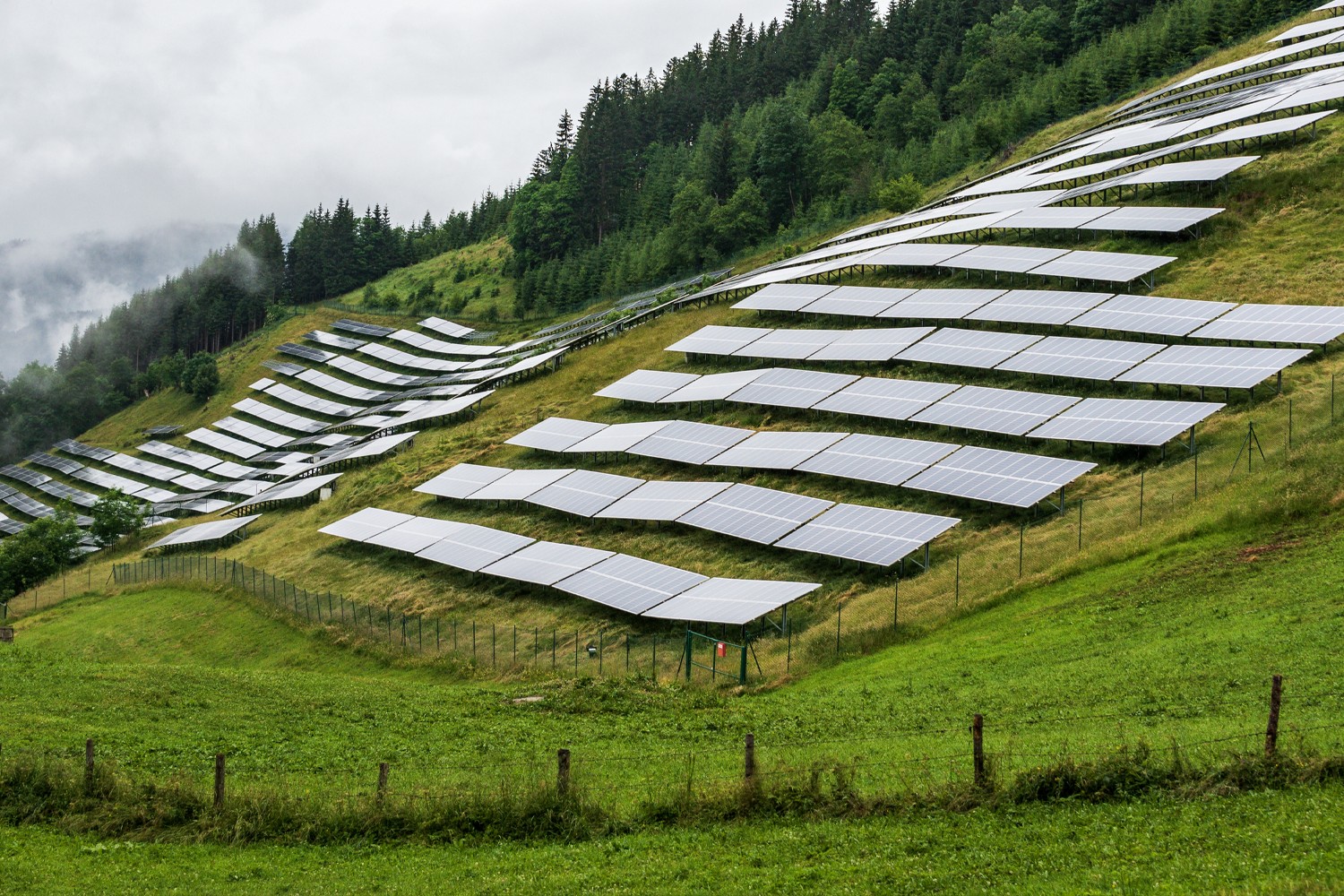You’ve secured a prime solar site close to the grid with flat, buildable land. But then, you discover the grid connection is at full capacity. Suddenly, the project you thought was a sure thing is on hold — or worse, abandoned — unless you’re prepared to tackle the daunting expense of a major grid upgrade to keep your project alive.
This is the reality of solar development in 2025. The solar boom has brought unprecedented growth, but it’s also introduced fierce competition, congested grids, and a shrinking pool of ideal sites. If you still rely on traditional strategies to scout for land — you’re already falling behind.
Dive into this article as we take a look at the solar industry landscape in 2025, venture into the new frontier — challenging lands, and discover insights from our latest e-book, “Developing solar projects on challenging land,” a comprehensive blueprint for thriving in the solar industry’s most demanding era.
A snapshot of the solar industry in 2025
WoodMac reports remarkable growth in the global annual installations of solar photovoltaic (PV) systems in 2023, surpassing an 80% increase compared to 2022 and reaching an impressive grid-connected installed capacity of 417 GWdc.
However, in Europe, where solar capacity additions grew by over 40% compared to the previous year, the grids are struggling to keep up with this rapid expansion in solar generation. The European Union estimates that an annual grid investment of 600 billion euros is necessary to reach decarbonization targets and support the growth of both large-scale renewable energy and decentralized solar PV resources throughout the decade. Clearly, with growth comes new challenges:
- Congested grids: Berkeley Lab states that by 2024, over 80% of interconnection requests in the U.S. were stuck in bottlenecks, with wait times exceeding three years in some cases. This issue is expected to worsen in 2025 as more developers compete for limited capacity.
- Shrinking margins: module prices may have stabilized, but rising costs for labor, permitting, and interconnection studies are eating into profits. Developers can no longer rely solely on traditional high-margin projects.
- Competitive pressure: the number of solar developers has doubled in the past decade, according to SEIA. With more players entering the field, competition for prime parcels has reached a fever pitch.
In this landscape, innovation is a necessity. But how can we be innovative in such a competitive market? Let’s explore the strategies and tools that make it possible.
Turning “no” into “yes”: solar development on challenging landscapes
For decades, solar developers sought the “perfect” parcels: flat, easily accessible land close to grid infrastructure. But in 2025, such parcels are a rarity. Instead, developers must adapt to a new reality: suboptimal parcels with hilly terrains, flood risks, or limited proximity to infrastructure.
While challenging land presents unique obstacles, it also offers untapped opportunities. Sites often overlooked by competitors can become profitable projects — if approached with the right tools and strategies.
PVcase e-book, “Developing solar projects on challenging land,” explores how developers can reframe their approach to demanding parcels. With the right mindset and technology, sites once considered unworkable can be transformed into profitable solar projects.
Grid congestion
Challenge: Berkeley Lab-led study shows that “nearly 2,600 gigawatts of energy and storage capacity in transmission grid interconnection queues.” Developers face long delays and high costs to secure grid access.
Solution: early-stage solar development tools like PVcase Prospect streamline site selection by prioritizing locations with available grid capacity. With real-time grid data and locational marginal pricing (LMP) insights, developers can focus on sites that offer feasible and profitable connections.
Topographical challenges
Challenge: developers are increasingly forced to build on hilly, irregular, or flood-prone land. These terrains can complicate construction and increase costs.
Solution: advanced design tools, such as PVcase Ground Mount, simplify the process of designing solar plants on complex terrains. From terrain mesh generation to slope analysis, these tools ensure that no viable land is left untapped.
Data overload
Challenge: identifying suitable parcels requires processing vast amounts of data — from topography and flood risks to grid capacity and energy pricing. Traditional manual methods are time-intensive and prone to errors.
Solution: automation is the key. PVcase Prospect integrates over 300 data layers, including grid capacity, LMP data, and flood risk maps, into a single platform. Developers can evaluate thousands of parcels, enabling a “fail fast” approach to site selection.
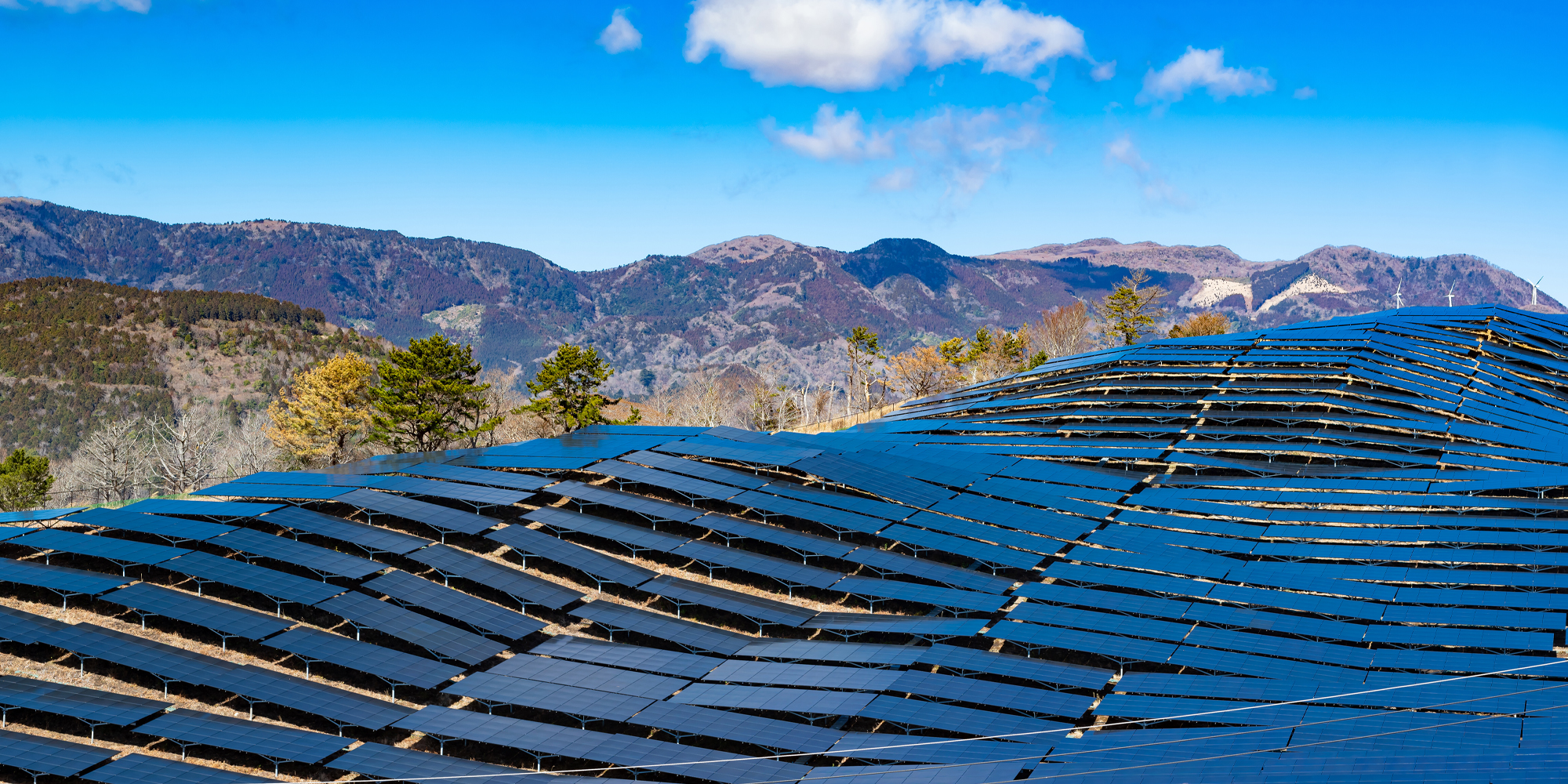
A proven workflow for success
The e-book outlines a three-step approach to developing solar on challenging land:
Step 1: Early-stage solar development opportunities with PVcase Prospect
Start by identifying and analyzing overlooked parcels using automated tools. Features like Grid Capacity, Parcel Search, Buildable Area Analysis, Flood RIsk data (and more!) allow developers to uncover the hidden potential in sites your competitors miss.
Step 2: PVcase Prospect data integration into PVcase Ground Mount
Once a site is selected, you can seamlessly transition into the design phase in PVcase Ground Mount. The process ensures data integrity, allowing developers to move from site selection to design in just 20 seconds.
Step 3: Design on complex terrains
Use PVcase Ground Mount’s advanced tools to create optimized layouts, perform civil analyses, and generate detailed designs — even for the most irregular sites.
The future?
As the solar industry matures, the challenges will only grow. Developers who stick to traditional methods risk being left behind. But those who choose tools to innovate — turning challenging land into opportunities — will stay at the forefront of the competition.
Dive into the tools and strategies outlined in the e-book “Developing solar projects on challenging land” that are dedicated to your survival in the industry and about thriving and staying competitive, even amidst challenges.

Gabrielė Ptašinskaitė-Mačiulė
Copywriter
Fact checked by: Megan Young, VP of Client & Strategic Initiatives
You might also be interested in:
March 26, 2025
PVcase Yield product guide: revolutionize solar energy modeling with advanced technology
Download PVcase Yield product guide and discover how PVcase Yield is transforming solar energy modeling with its advanced digital twin technology and physics-based simulations.…
March 25, 2025
The impact of Zoning Data on strategic site selection
Zoning Data encompasses the information used by local governments to classify land use. Learn how this new addition to PVcase Prospect enables solar developers to choose a project…
March 24, 2025
PVcase’s spring product updates: what’s new
PVcase and HeatSpring offer a new training bundle on utility-scale solar engineering for solar designers and engineers.
March 5, 2025
Why fiber data is non-negotiable for data center site selection
Discover why integrating fiber data into your data center site selection process is crucial for reducing costs, accelerating deployment, and improving network resilience.
February 20, 2025
PVcase Ground Mount wins G2 2025 Best CAD & PLM Software award
PVcase and HeatSpring offer a new training bundle on utility-scale solar engineering for solar designers and engineers.
February 18, 2025
PVcase partners with HeatSpring for advanced utility-scale solar training
PVcase and HeatSpring offer a new training bundle on utility-scale solar engineering for solar designers and engineers.
February 3, 2025
Solving ground mount solar design challenges. A guide by engineers, for engineers
Download our e-book for expert insights and actionable solutions to the common pain points you encounter in your day-to-day work, and start taking back your development time.
January 15, 2025
Award-worthy solar software: PVcase’s impact in 2024
Explore how PVcase's award-winning product suite is combating climate change through innovative software and what achievements were recognized the most.
January 14, 2025
Top 10 questions asked during the PVcase Digital SmartUp’24 — answered
Customers ask, we answer — read the article to find answers to the top 10 most asked questions at the exclusive PVcase Digital SmartUp'24 event.
December 12, 2024
Why Locational Marginal Pricing (LMP) data is essential for solar development?
Locational Marginal Pricing (LMP) data helps solar developers forecast profitability, minimize financial risk, and optimize site selection. Let’s break down what LMP data is, its…
December 11, 2024
PVcase product updates — November highlights
With PVcase November updates, you can achieve faster, more accurate results today — no need to make them your New Year’s resolutions. Dive into the major updates from the PVcase…
December 9, 2024
The importance of quality GIS data for solar site selection
Discover the impact of high-quality GIS data on solar site selection. Learn how parcel data, grid capacity, and LMP data optimize solar project development, reduce risks, and…
December 2, 2024
Consequences of extreme weather events: can we still afford it?
Floods, hurricanes, wildfires — whether we want them or not, extreme weather events have become the new normal. This year alone, there have been 24 billion-dollar weather…
November 14, 2024
Fail fast, succeed faster: the developer’s guide to streamlining solar projects with early-stage development software
Discover how solar developers thrive by adopting the 'fail fast, succeed faster' approach. Explore the role of early-stage development software, such as PVcase Prospect, in…
November 11, 2024
PV plant performance: challenges and solutions for large-scale solar projects
Large-scale PV plants are essential for the global transition to renewable energy. Their successful deployment and operation require addressing various challenges related to site…


